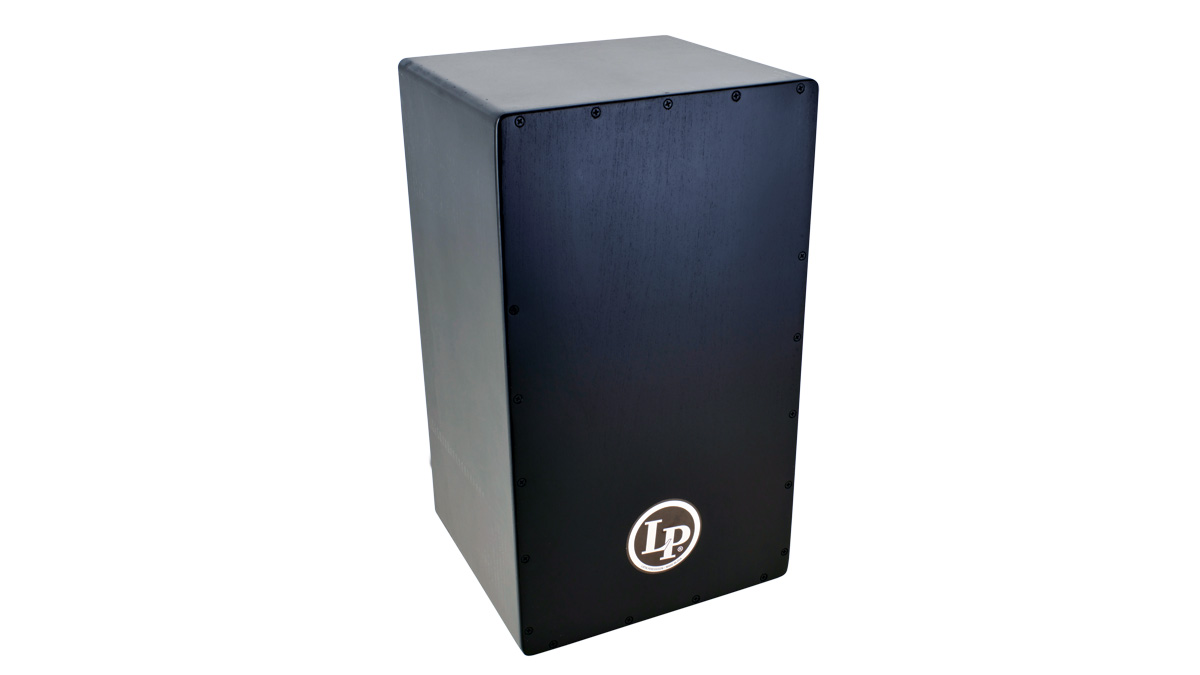MusicRadar Verdict
In comparison with the many budget boxes available, this instrument looks cool and feels great to play.
Pros
- +
Well priced.
Cons
- -
Lacking low-end.
MusicRadar's got your back
Latin Percussion is renowned for its percussive prowess, and today the trusted LP brand is synonymous with hand percussion.
The new Black Box cajon is the latest addition to the company's extensive catalogue which now boasts a variety of over 30 models of the Peruvian instrument in all shapes, sizes and finishes.
Build
Hailing from LP's City Series, this new model has a 6mm-thick MDF body and a tapa made from Baltic Birch - a material which LP says is found on some of the more upmarket models they have to offer.
The exterior is plain and understated but is smoothly finished in matte black spray paintwork. To the front is a small sticker displaying 'LP' and USA as the country, together with a series of Phillips-type screws holding the tapa in place.
Smack in the centre of the rear panel is a 10cm diameter sound hole where we can view a clutter-free interior. Here LP has opted for two end sections of a snare strainer to produce the 'snare' effect.
These are fixed in position (remaining non-adjustable), on a chunky piece of plywood that spans from one side of the cajon to the other. The bare wire ends are tilted up against the tapa towards the uppermost portion of the box.
Hands On
The whole cajon feels wonderfully smooth to the touch, allowing the hands to glide rapidly over the entire playable surface with ease. At the upper end of the scale, finger taps are clear, sharp and well-defined which leads us to produce some satisfyingly brisk rhythmic patterns.
The edges are beautifully rounded which proves advantageous when playing with force and without causing damage to our precious digits. This proves a useful attribute as, unless the cajon is subject to a really hefty belt aimed at the top of the box, the snare effect is barely audible.
Oddly, the upside of this quietness is the clear distinction between the tonal areas, which we find quick to pinpoint.
However, having played the box on a variety of floor surfaces and room settings, those really low-end tones don't make an appearance until seated in the corner of a room. Here the cajon provides a more acceptable, enhanced lower tone.
"This is the amp that defined what electric guitar sounds like": Universal Audio releases its UAFX Woodrow '55 pedal as a plugin, putting an "American classic" in your DAW
"Yamaha has achieved an extraordinary level of immersiveness and realism, crafting an instrument that sounds closer to an acoustic piano and feels like one under your fingers": Yamaha Clavinova CLP-885 digital piano review
With its latest free update, Ableton has finally turned Note into the app I always wanted it to be










